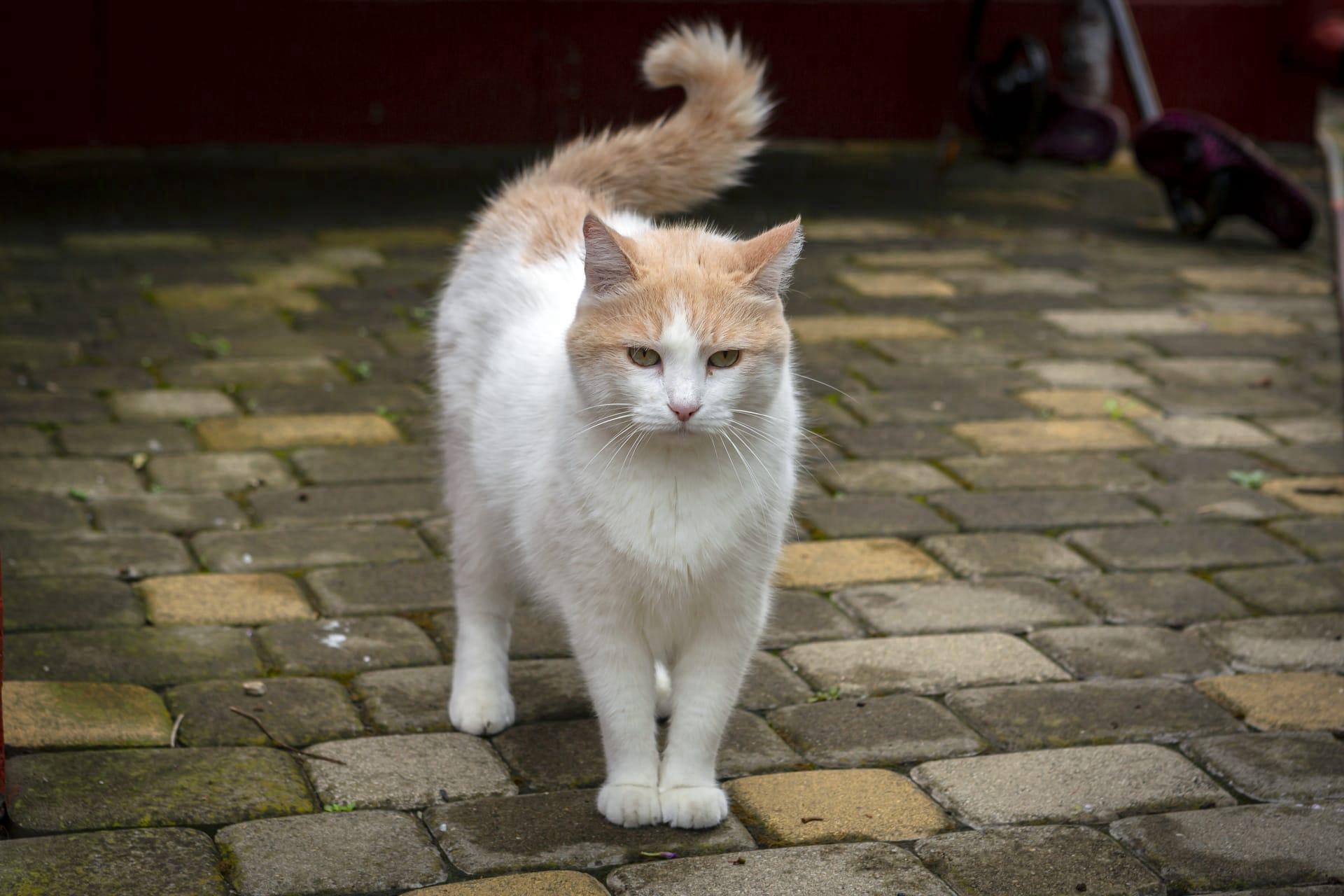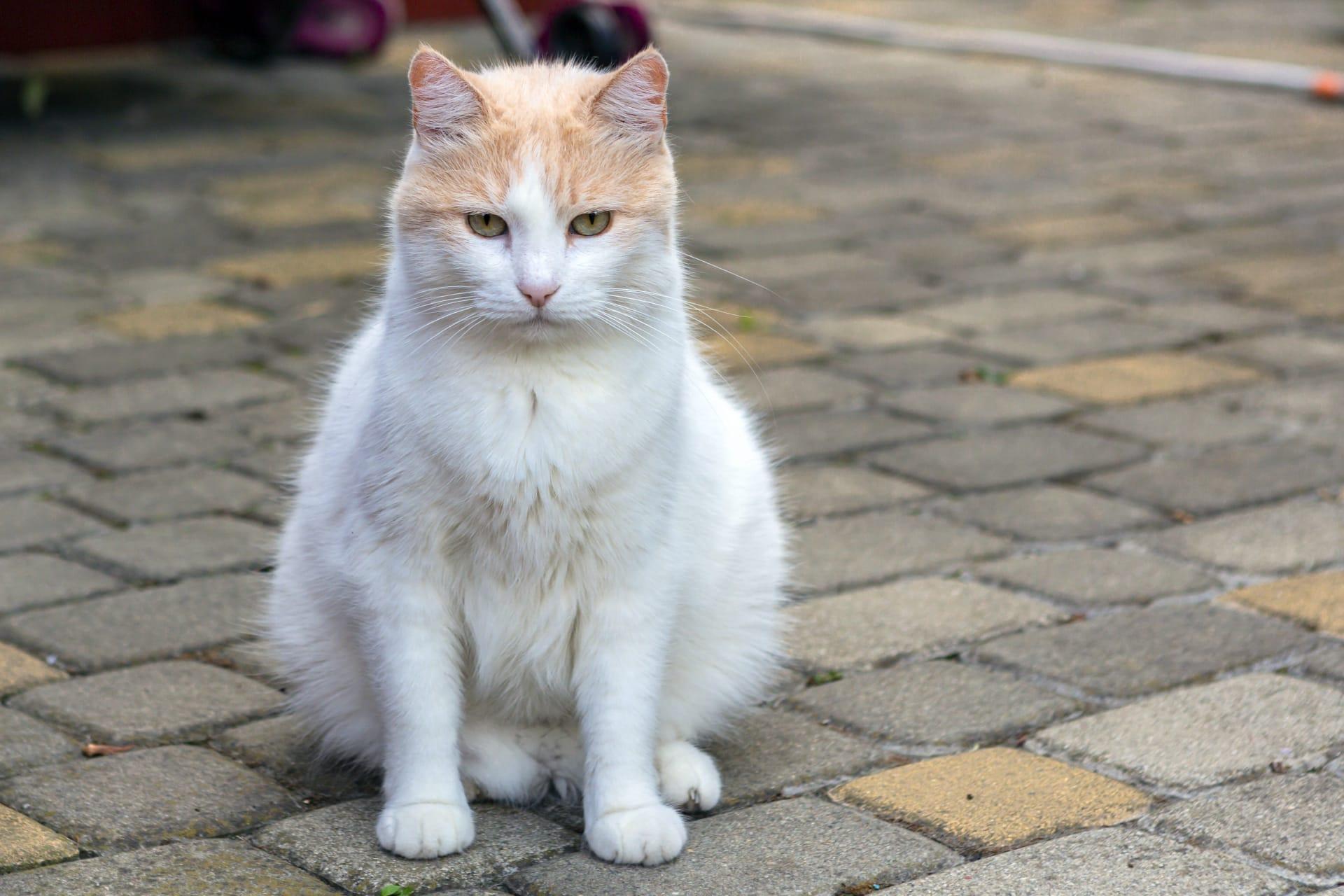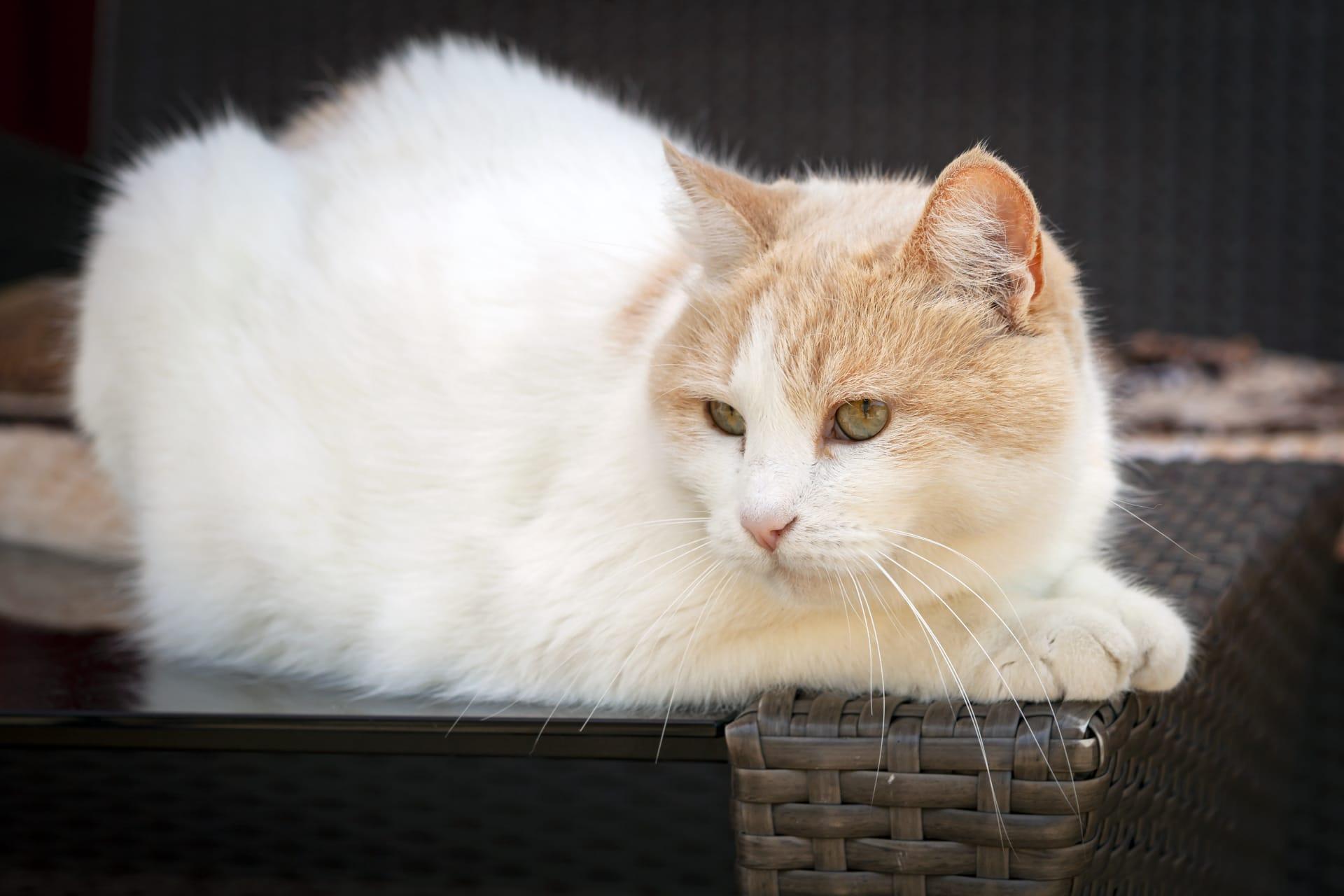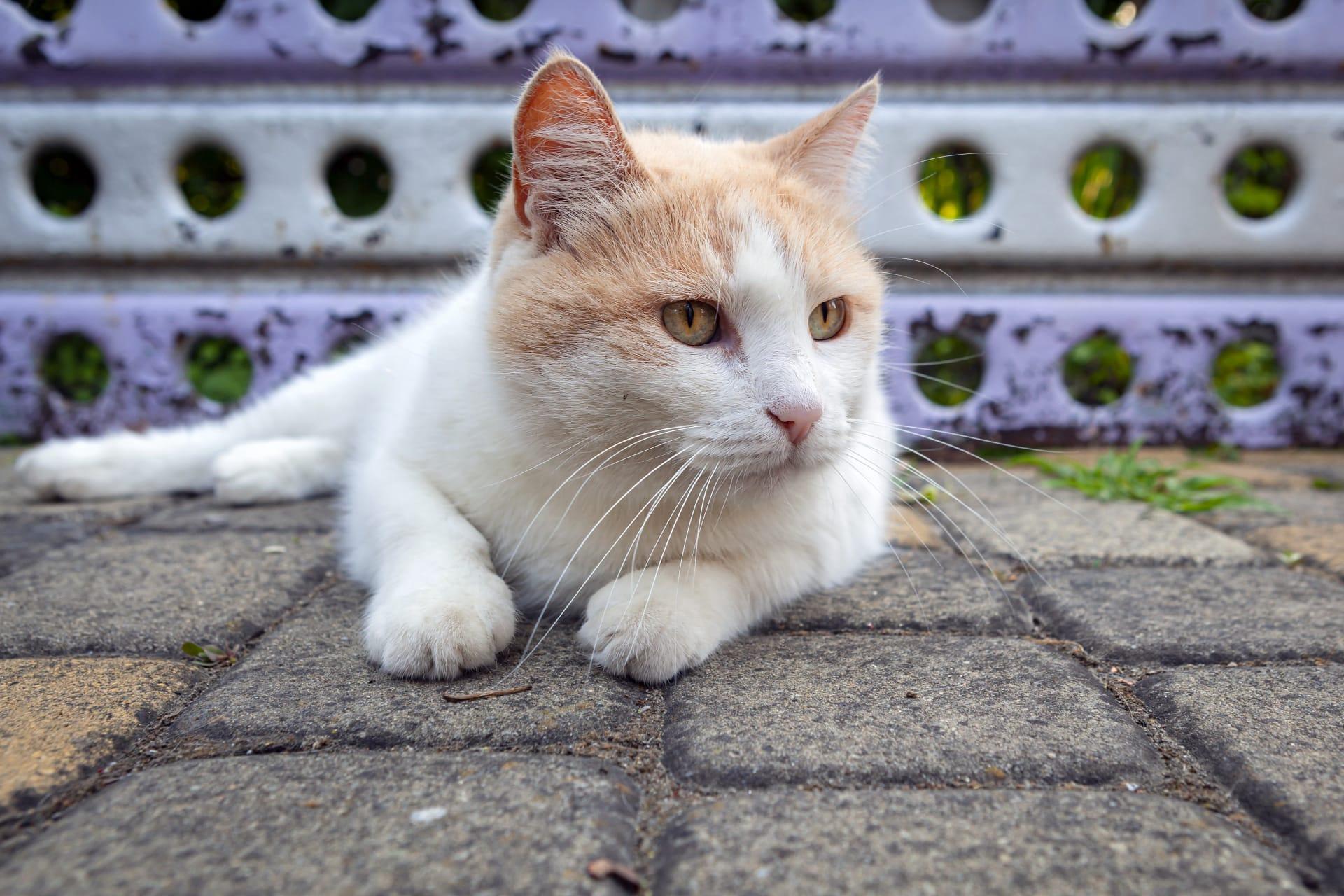1
The Turkish Van Cat, a breed as mysterious as its homeland, carries a remarkable trait: its love for water. Unlike most felines, which shy away from water, the Turkish Van is known as the "swimming cat." This unique affinity for water isn't just about splashing around; these cats have been observed swimming in various bodies of water, showcasing their strong, muscular build and their distinctive, water-resistant coat. The coat has a special texture that allows it to remain relatively dry, enabling the cat to swim without being weighed down. This love for water is believed to have developed over centuries in the Lake Van region of Turkey, where the breed originated. The lake's vast expanse and warm temperatures during the summer months might have contributed to this unusual trait. The Turkish Van's coat, predominantly white with colored markings on the head and tail, adds to its striking appearance, making it a majestic swimmer in any body of water.
The Turkish Van is also distinguished by its color-changing eyes. Kittens are born with pale blue eyes, which can change to amber or a heterochromatic combination as they mature. This change usually completes by the time they are 3 months old, adding a layer of mystique to their already captivating appearance. This eye color variation is not just a beautiful anomaly; it reflects the genetic diversity within the breed. The heterochromia is particularly sought after, giving each cat a unique look that complements its semi-long, cashmere-like coat. This coat, by the way, is seasonal, thickening in winter to provide extra insulation and thinning out in the warmer months to keep the cat cool. This adaptability, combined with their muscular build, not only makes them excellent swimmers but also resilient pets capable of thriving in various climates.

2
The Turkish Van's history is steeped in legend and allure, tracing back to the rugged, mountainous regions of Eastern Turkey. This breed isn't just another domesticated feline; it's a living piece of Turkish folklore. According to popular tales, the Turkish Van was believed to be aboard Noah's Ark. Once the flood waters receded, these cats disembarked in the region around Mount Ararat, not far from Lake Van, and began to proliferate. This legend contributes to their mystical aura and highlights their deep-rooted connection to the area. The breed's endurance and rugged nature are said to mirror the landscape of their homeland, embodying the spirit of survival and adaptability.
Another fascinating aspect of the Turkish Van is its seasonal coat change, which is a marvel of nature's design. Unlike other cat breeds, the Turkish Van's coat undergoes a significant transformation between seasons. In winter, their fur grows thick and plush, providing ample warmth during the colder months. Come summer, the coat sheds to a much lighter version of itself, helping the cat stay cool under the sun. This transformation is not just practical; it also changes the aesthetic of the cat, from a majestic, fluffy creature in the winter to a sleek, agile hunter in the summer. This unique characteristic demonstrates the breed's evolutionary adaptation to the extreme temperature variations of its native region.

3
One of the most endearing qualities of the Turkish Van is its playful and affectionate nature. Despite their somewhat regal appearance, these cats are known for their love of games and interaction with humans. They possess a high level of intelligence that makes them curious and adventurous pets. This intelligence also means they can be trained to perform tricks or follow commands, which is uncommon for many cat breeds. Their playful behavior extends to a fascination with toys and objects that can be chased or fetched, often displaying a puppy-like demeanor in their eagerness to play and interact.
The Turkish Van is not only a companion but also a natural hunter, a trait deeply ingrained in its DNA. This breed exhibits a strong predatory instinct, often observed in their play but also in their alertness to the environment. This instinct is a remnant of their origins, where survival depended on their ability to hunt. Despite being well-adapted to domestic life, the Turkish Van retains this keen sense of awareness and agility, making them excellent mousers. Their hunting prowess is complemented by their physical strength and agility, enabling them to leap great distances and heights with ease, often to the astonishment of their human companions.

4
In terms of social hierarchy, Turkish Vans display a unique sense of community and interaction, not only with humans but also with other pets. They are known for their sociable nature, often forming strong bonds with their owners and showing a level of loyalty that is deeply touching. Their social behavior extends to other animals as well, making them great companions in multi-pet households. They have a gentle demeanor towards other cats and even dogs, provided they have been properly introduced and socialized. This amiable nature makes them excellent family pets, adaptable to various household dynamics.
Another notable feature of the Turkish Van is its vocal communication. While not overly talkative, they have a distinctive way of expressing themselves, using a range of soft chirps and meows to communicate with their humans. This vocalization is often used to greet their owners or request attention, showing a level of interaction that is both endearing and amusing. Their communication style is a reflection of their personality, showcasing their intelligence and desire for interaction. This trait, combined with their striking looks and playful nature, makes them not just pets but companions with a unique character and presence.

5
The Turkish Van's dietary habits reflect their robust nature and active lifestyle. These cats have a hearty appetite, which is necessary to fuel their energetic and playful demeanor. Their diet needs to be rich in proteins to support their muscle development and overall health. Given their love for water, it's also essential to ensure they have constant access to fresh, clean water, possibly contributing to their affinity for aquatic environments. A balanced diet, combined with regular exercise, is crucial for maintaining their health and vitality, highlighting the importance of understanding and catering to their nutritional needs.
The Turkish Van's grooming needs are surprisingly low-maintenance, considering their semi-long coat. Their fur does not mat or tangle easily, thanks to its unique texture, which means they require less brushing compared to other long-haired breeds. However, during their seasonal shedding, especially in spring, they benefit from more frequent grooming to help remove loose fur and maintain their coat's health. This low-maintenance grooming regimen is a boon for owners, making it easier to care for these magnificent cats while still enjoying the beauty of their luxurious coat.